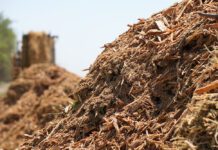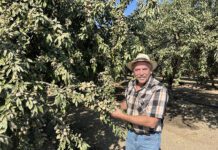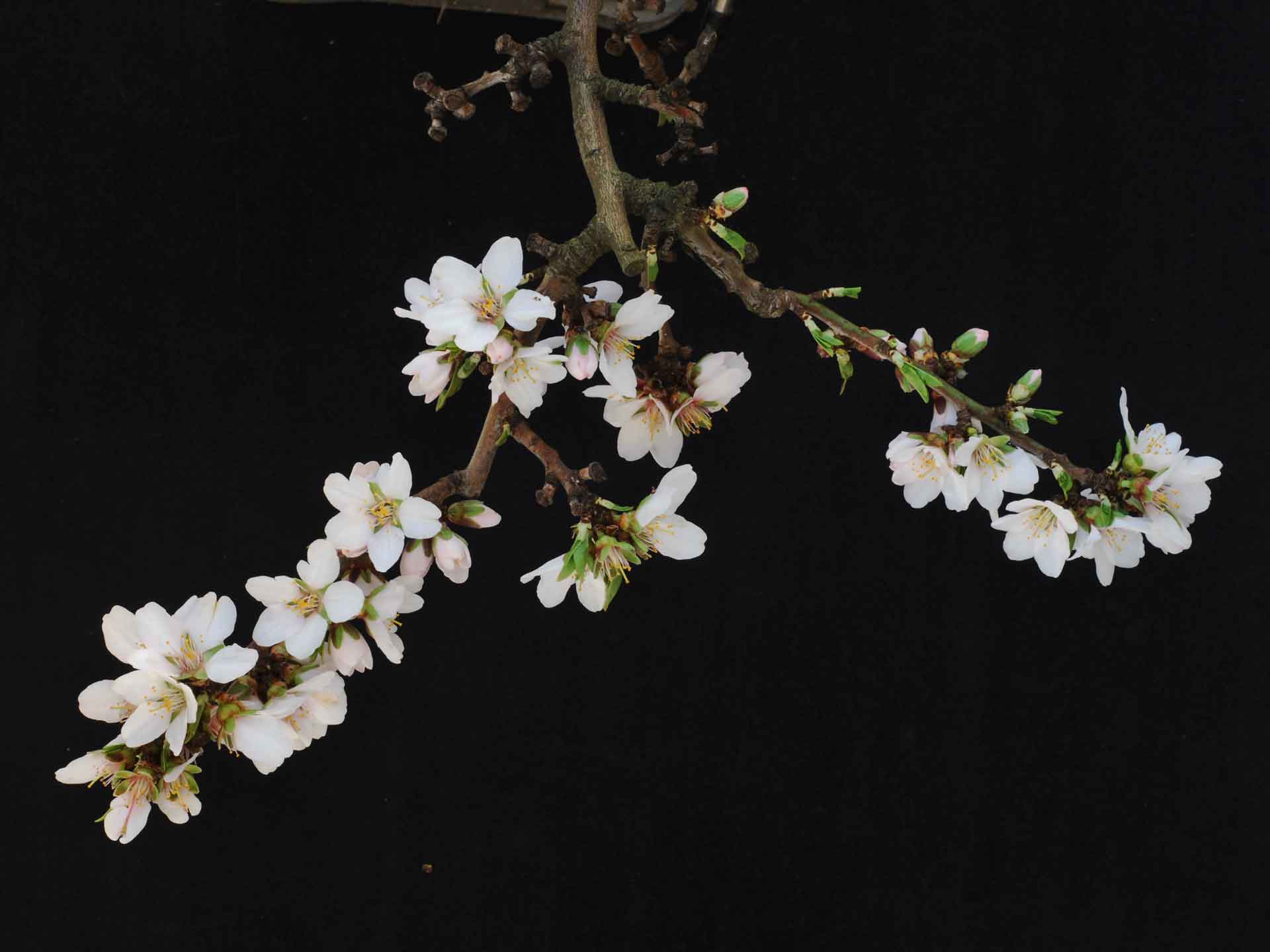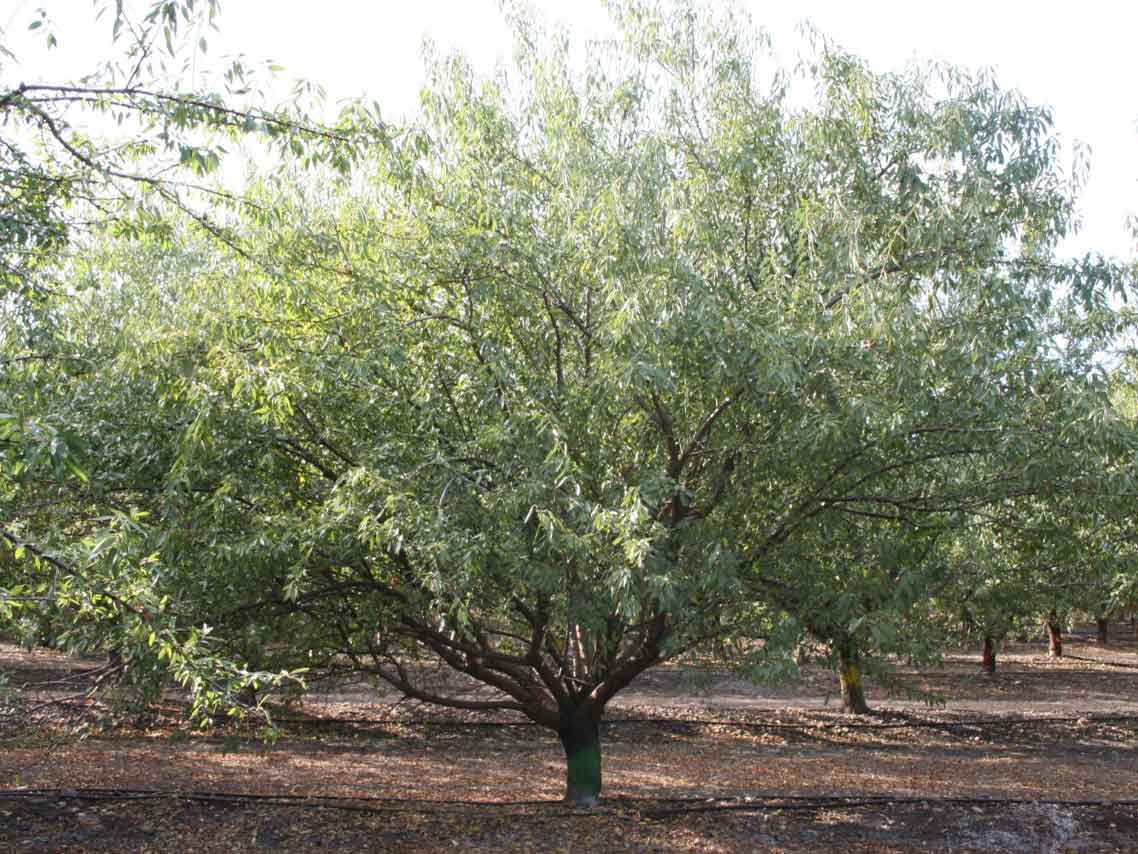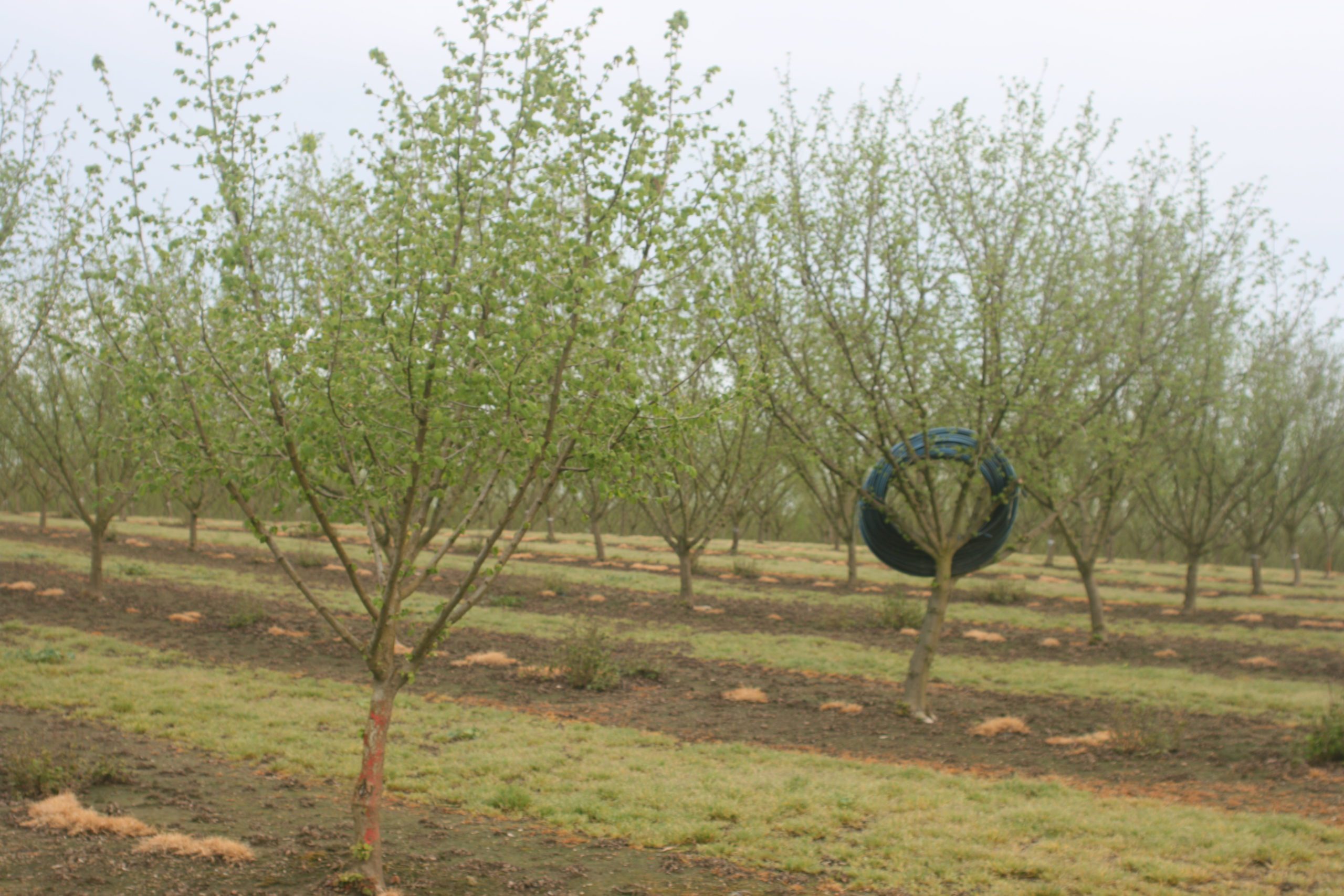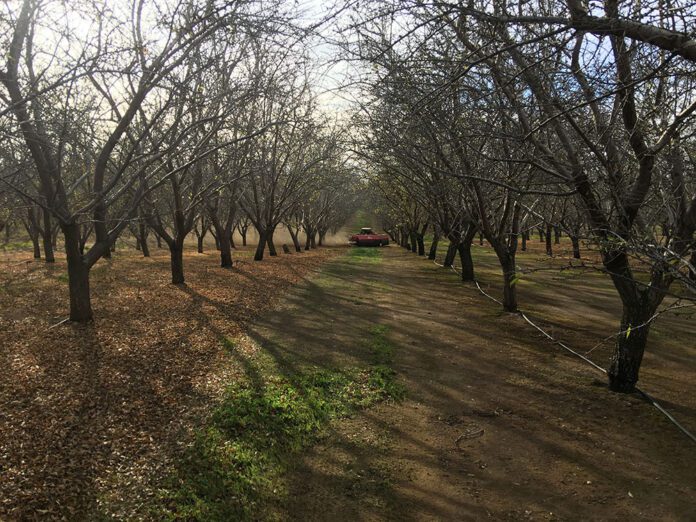
Listen to the audio version of this article. (Generated by A.I.)
More than two dozen university researchers shared progress and results of their Almond Board of California (ABC)-funded studies at the Production Research Summit in June.
Sebastian Saa, ABC’s associate director of agricultural research, noted in opening remarks that challenges in the almond industry are constantly evolving. The summit was designed, he said, to reflect the diversity of research and give almond growers and managers a look at the depth and breadth of the organization’s production research portfolio.
Summit Highlights
Nine different updates on production research centered around irrigation, nutrients and soil health.
UC Davis irrigation specialist Ken Shakel opened the summit with the question: “Do almonds need less water if the crop load is low? And are carbohydrates involved?”
Field trials done during the low-yield year of 2023 and the high yield of 2024 showed that stress always reduces yield even when the crop load is low. He also noted that the trials showed no evidence that thinning reduces water stress.
Comparing the two years, he noted that 60% more water was applied in 2024 with a small difference in stem water potential. More data collected in the next few years, Shakel said, will help determine if yearly differences in crop load allow for yearly differences in applied water.
As for the role of carbohydrates, Shakel noted that reductions in yield caused by water stress appear to be due to carryover effects on the number of flowers produced rather than on flower set.
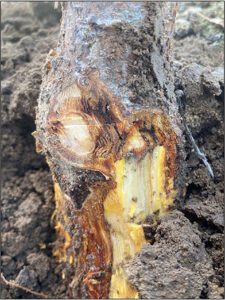
Regenerative Orchards
UC Davis agroecology professor Amelie Gaudin focused on biological principles in design of regenerative orchards. These orchards, she said, maximize biodiversity, maintain living roots, keep soil covered and have frequent applications of organic matter and strategic minimal disturbances.
“These systems already exist across our landscapes,” Gaudin said. Practices aimed at achieving these goals include whole orchard recycling, mulches and organic amendments, field margin habitat, grazing and biochars. When these practices are stacked, Gaudin said they are an effective strategy to enhance soil health.
Gaudin’s research, in its second year, has 30 trial sites from Chico to Madera to study benefits and trade-offs with regenerative practices.
When it comes to replanted orchards after whole orchard recycling, UCCE Orchard Specialist Mae Culumber studies aimed at water and nitrogen use efficiency. Growers commonly apply twice the recommended N application after wood chip incorporation to overcome the high carbon-to-nitrogen ratio. In the first four years of the nitrogen rate trial, Culumber said no significant association was established between N rate and tree growth, yield or nutrition for either control or wood chip-treated soils. The N treatment results are expected to separate as trees mature and yields increase.
The orchard, tree and rootstock portion of the summit included updates on block-level yield prediction. UC Davis researcher Yufang Jin noted that yield data collected 2017-2024 added to the original database with nearly 300 orchards and 20 years of yield records.
Goal of the yield prediction work is to develop robust models to predict yield and optimize N management.
The next steps include benchmarking and improving baseline models with more training data. Deep learning architecture will be used to utilize sequential information to improve orchard and cultivar-level forecasting.
UCCE Specialist Giulia Marino outlined her research on improving fruit removal and harvest efficiency with the loosening agent ACC, a naturally occurring precursor of ethylene. Going forward, Marino said she will be comparing early and late harvest detachment indexes and test different ACC application times. Incidence, morphology and physiology of mummy nuts will be characterized along with determining the effect of within-canopy microclimate variability on almond fruit development and ripening.
Retired UCCE Pomology Advisor Roger Duncan shared results of a rootstock trial aimed at controlling tree size control of trees for the purpose of accommodating off-ground harvest equipment.
The trial, planted in 2020, included 16 rootstocks that were evaluated for compatibility with Nonpareil and Monterey. Vigor was also documented. Duncan noted advantages and disadvantages of each, with a new rootstock, MP-29, that had never been used in almonds, as a viable option.
Don’t ignore the problem. You have to think of some way to reduce nematodes before planting.
– Andreas Westphal, UC Riverside
Pest and Disease Management
The final section of the summit focused on pest, disease and weed management in almond production.
Houston Wilson, UCCE entomology specialist, noted success in the leaffooted bug (LFB) trap and lure project. This work entailed identifying a pheromone compound that worked, a suitable trap and development of a commercial lure for this pest. Going forward, Wilson said the project will cover lure concentration and longevity, relationship between trap counts and LFB activity in the tree canopy as well as development of economic thresholds for LFB.
Another component of this work involves evaluation of the influence of landscape composition on almond orchard susceptibility to LFB colonization in the spring. This will help, Wilson said, to better understand LFB damage risk in orchards. Using the trap and lure combination, they related the trap catch to the landscape site. Much higher concentrations of LFB were found at sites adjacent to citrus.
A large collaborative study has focused on the seasonal phenology of a new pest, the Carpophilus beetle, first found in California almonds and pistachios in 2023. Wilson stressed that orchard sanitation, including shredding, is currently key to control. Spray coverage is a major challenge. Chemical control work will continue, he said.
“Mating disruption (MD) works,” UCCE Kern County Entomologist David Haviland stressed. He backs this up with data from trials done at the Shafter Research Station where MD on a large scale reduced navel orangeworm damage by 70%. MD should be seen as an investment, not an expense, he said.
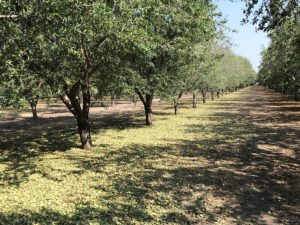
Work also continues with evaluating conventional pesticides. Haviland said studies are also being done on the effectiveness of biopesticides.
Moving on to nematode management, Andreas Westphal of UC Riverside stressed the importance of planning ahead when soils are infested with nematodes.
“Don’t ignore the problem. You have to think of some way to reduce nematodes before planting,” Westphal said.
Preplant and post-plant applications are management options, but in the future, combinations of preplant soil treatments and post-plant remedies will be necessary.
Greg Browne of UC Davis noted improvements in non-fumigant-based approaches for management of almond replant disease.
Two alternatives are ag byproducts rice bran and ground almond hull and shell.
These are components of anaerobic soil disinfestation (ASD) and are also soil amendments. The process of ASD reduces soil pest populations.
Browne said trials are showing increases in trunk diameter and almond yields based on two harvests in years three and four.
ASD is compatible with whole orchard recycling, Browne said. He also sees long-term potential in use of these byproducts to manage replant disease.
Phytophthora diseases are becoming more common, said UC Riverside researcher Jim Adaskaveg, as growers depend more on surface water for irrigation.
Canal systems are providing favorable environments for Phytophthora to grow. Cankers, root rots, crown rots and lower trunk cankers are all Phytophthora diseases.
Adaskaveg said the fungicides ethaboxam, fluopicolide, mandipropamid and oxathiapiprolin represent three new modes of action against Phytophthora disease. Oxathiapiprolin is 10 to 100 times more active than other fungicides, allowing for lower field rates.
He noted systemic uptake of Phytophthora fungicides after soil applications, with Orondis, Presidio and Ridomil Gold being the most effective in reducing canker formation on rootstock and Monterey scion.
Florent Trouillas of UC Davis spoke about the new “hot topic” in almond production: red leaf blotch. This new invasive fungal disease was first detected last year in Merced County. It only affects leaves of almond trees, causing early defoliation.
Outbreaks of the disease have been found in all almond-growing regions of the state apart from Kern County.
“It is here to stay,” Trouillas said.
Fungicide control is effective but not if applied during bloom or after symptoms appear.
Research is ongoing to determine the optimal number of fungicide applications, but he said at least two to three applications are required between petal fall and five weeks post-petal fall for effective management.

Cecilia Parsons
Cecilia Parsons has lived in the Central Valley community of Ducor since 1976, covering agriculture for numerous agricultural publications over the years. She has found and nurtured many wonderful and helpful contacts in the ag community, including the UCCE advisors, allowing for news coverage that focuses on the basics of food production.
She is always on the search for new ag topics that can help growers and processors in the San Joaquin Valley improve their bottom line.
In her free time, Cecilia rides her horse, Holly in ranch versatility shows and raises registered Shetland sheep which she exhibits at county and state fairs during the summer.








